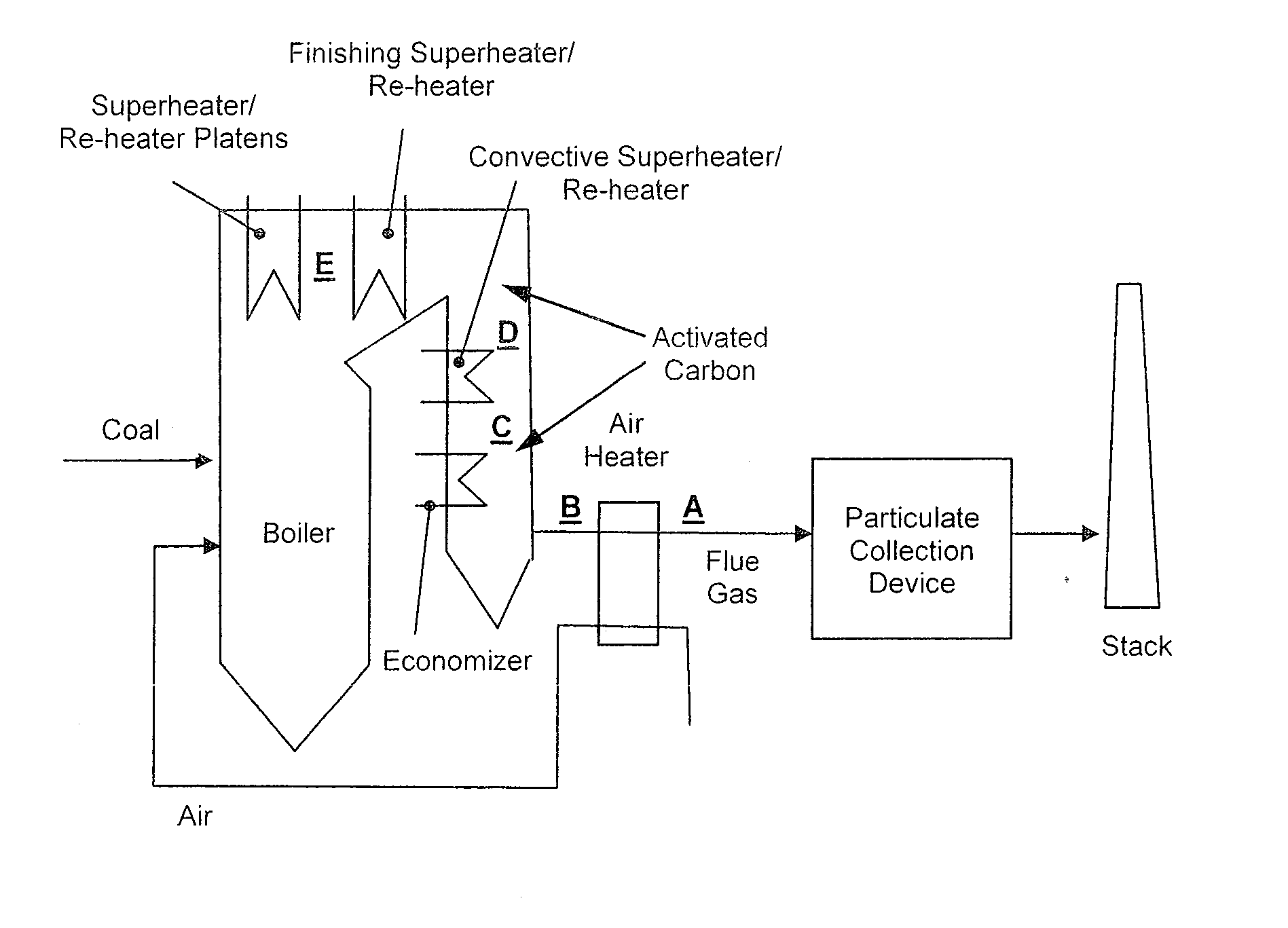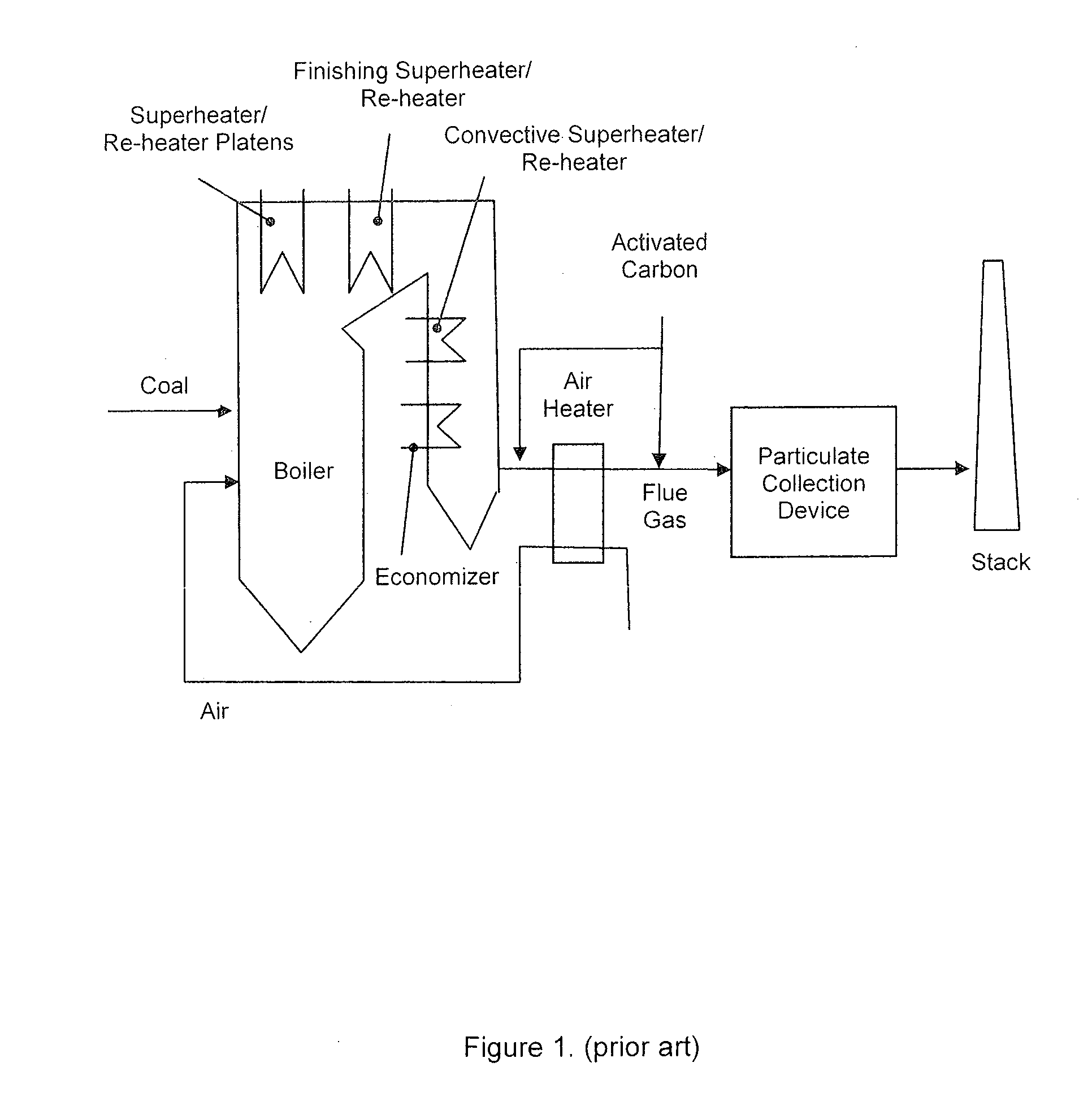Method for Capturing Mercury from Flue Gas
- Summary
- Abstract
- Description
- Claims
- Application Information
AI Technical Summary
Benefits of technology
Problems solved by technology
Method used
Image
Examples
Embodiment Construction
[0050]FIG. 1 provides an overview of a typical coal-fired power plant. The configuration, in this example, consists of a boiler, where water is evaporated to steam, followed by steam super-heater and re-heater sections (platens, finishing section, convective), an economizer section (where the boiler feed-water is pre-heated), and finally an air heater, where the combustion air is pre-heated. The combustion flue gas is cooled as it passes through each of these sections, transferring its heat to the water / steam stream on the other side of the heat exchangers. In a typical application, carbon sorbents are injected in the flue gas duct upstream of a particulate removal device such as a fabric filter or an electrostatic precipitator (FIG. 1), usually downstream of the air pre-heater and before the particulate removal device. The activated carbon used for such injection can be manufactured off-site from carbonaceous materials like coal, wood, or coconut shells.
[0051]FIG. 2 shows exemplary...
PUM
| Property | Measurement | Unit |
|---|---|---|
| Temperature | aaaaa | aaaaa |
| Temperature | aaaaa | aaaaa |
| Temperature | aaaaa | aaaaa |
Abstract
Description
Claims
Application Information
 Login to View More
Login to View More - R&D Engineer
- R&D Manager
- IP Professional
- Industry Leading Data Capabilities
- Powerful AI technology
- Patent DNA Extraction
Browse by: Latest US Patents, China's latest patents, Technical Efficacy Thesaurus, Application Domain, Technology Topic, Popular Technical Reports.
© 2024 PatSnap. All rights reserved.Legal|Privacy policy|Modern Slavery Act Transparency Statement|Sitemap|About US| Contact US: help@patsnap.com










